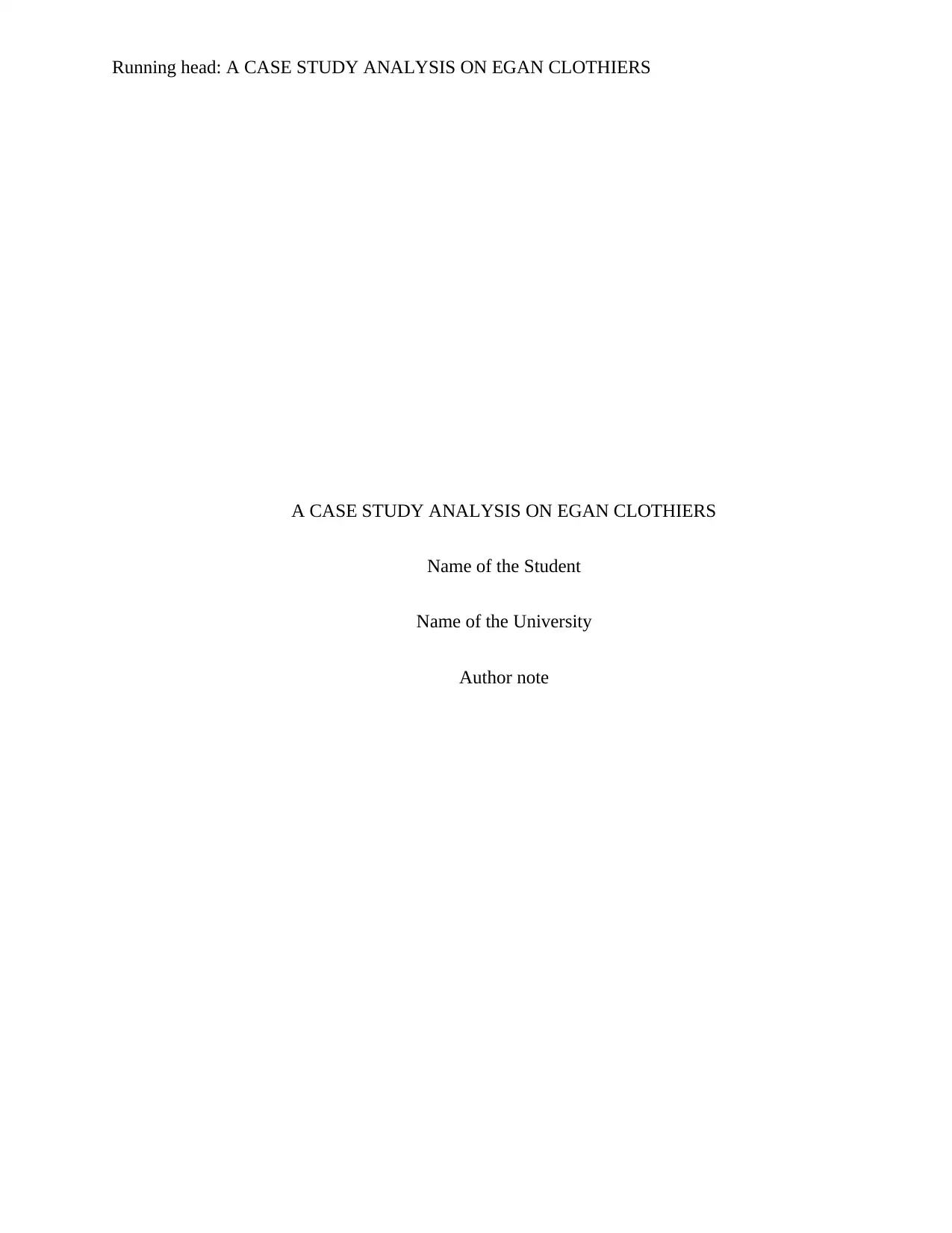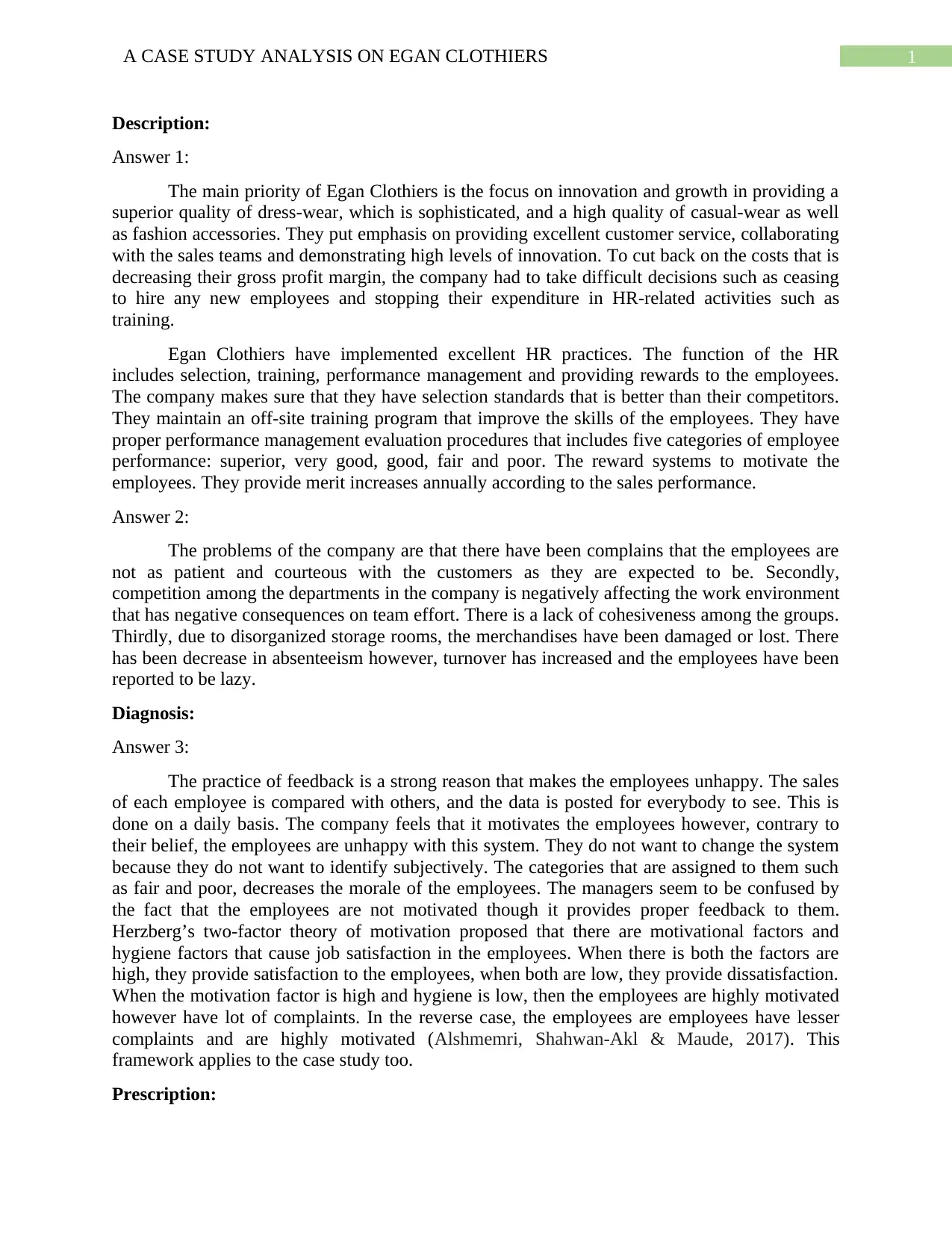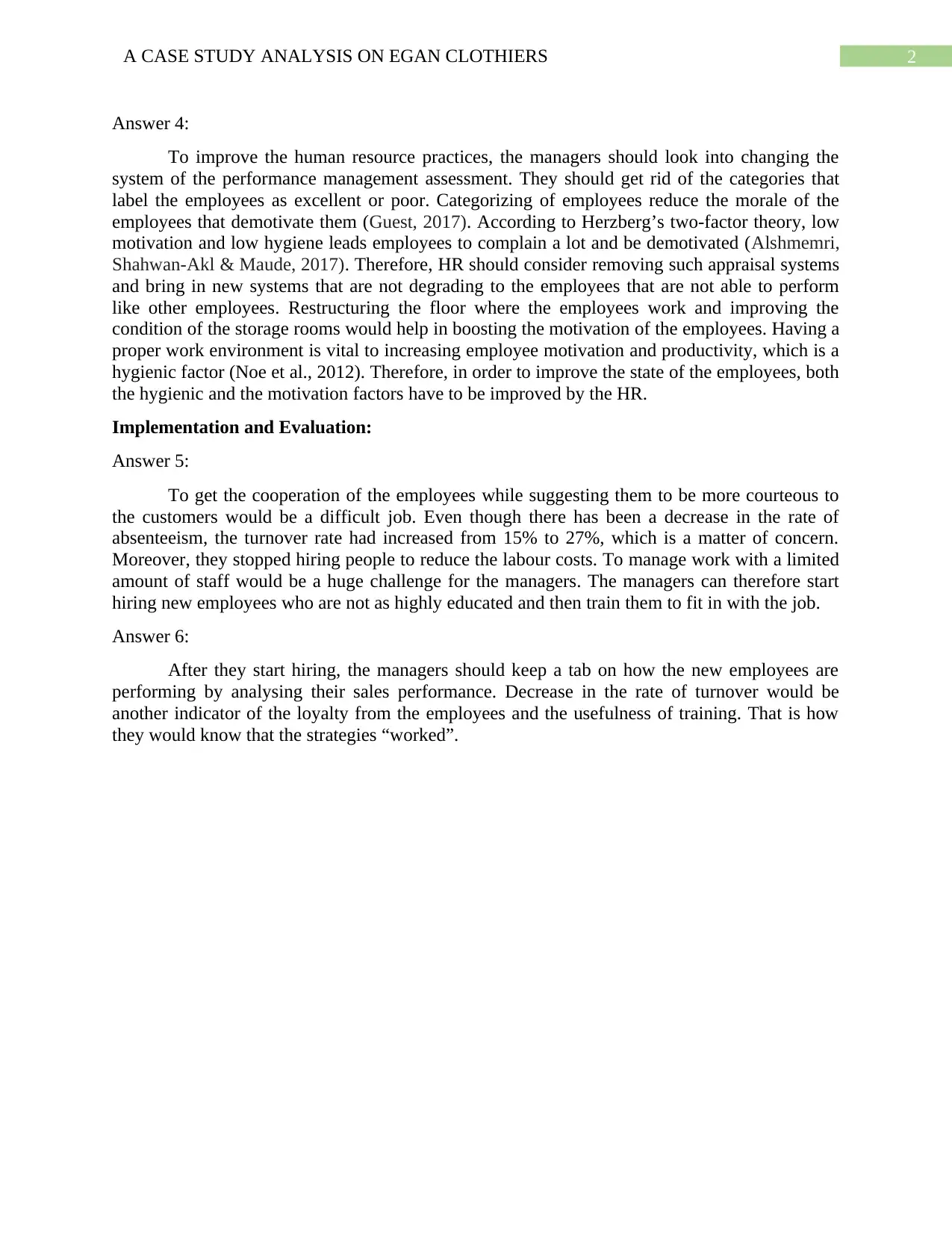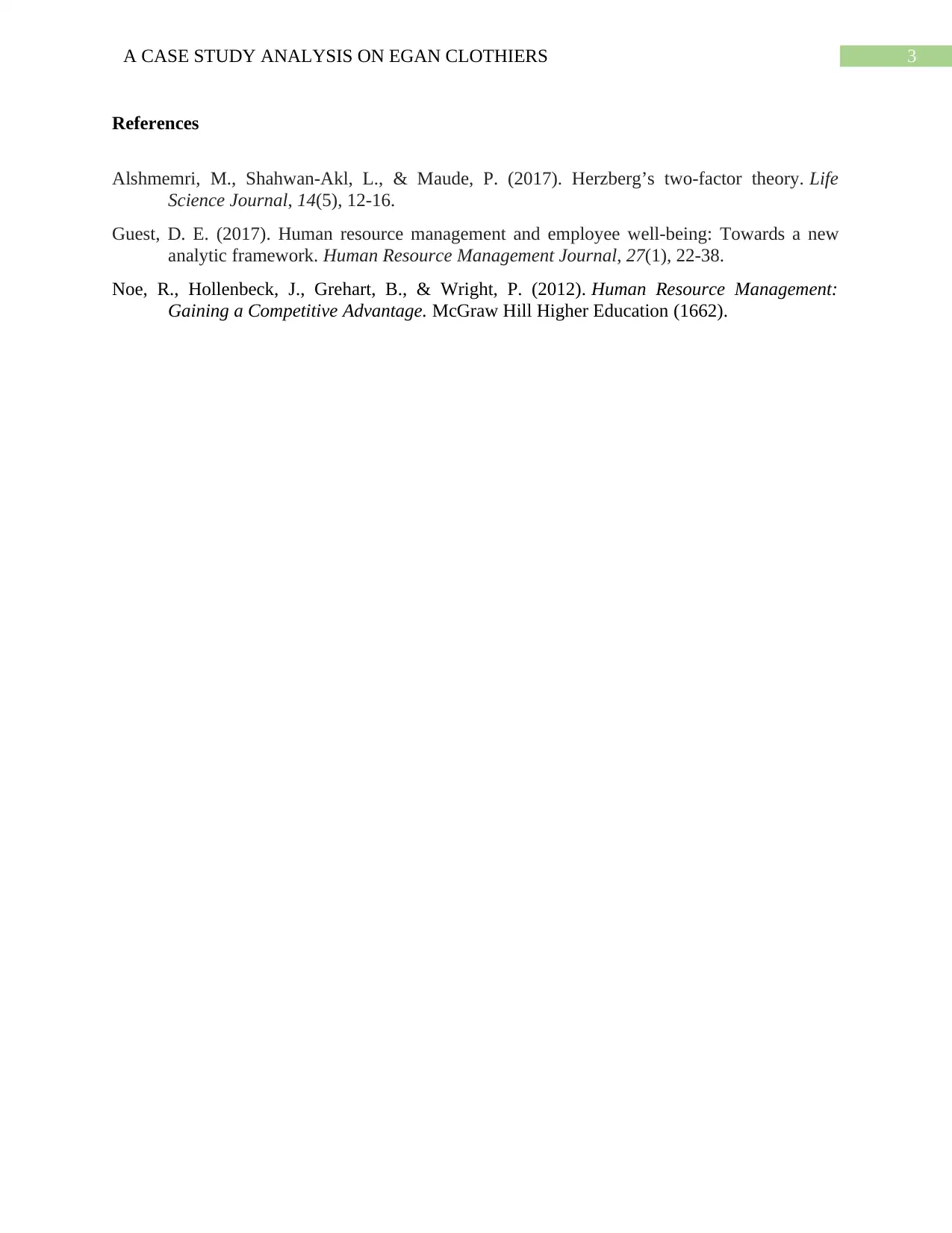Industrial Psychology Case Study: Egan Clothiers HR Practice Analysis
VerifiedAdded on 2022/09/09
|4
|1073
|18
Case Study
AI Summary
This case study analyzes the HR practices at Egan Clothiers, a company facing challenges related to employee motivation, performance management, and high turnover rates. The analysis begins with a description of the company's background, focusing on its growth and recent financial difficulties, particularly a decline in profitability. The study identifies several problems, including employee dissatisfaction with the performance evaluation system, interdepartmental competition, and disorganized storage rooms leading to damaged merchandise. The diagnosis section applies Herzberg’s two-factor theory to explain employee unhappiness, highlighting the impact of both motivational and hygiene factors. The prescription section suggests changes to the performance management system, advocating for the removal of employee categorizations that demotivate staff and improving the work environment. The implementation and evaluation sections address the challenges of implementing these changes and suggest ways to measure the success of the proposed strategies, such as monitoring turnover rates and employee performance.
1 out of 4











![[object Object]](/_next/static/media/star-bottom.7253800d.svg)